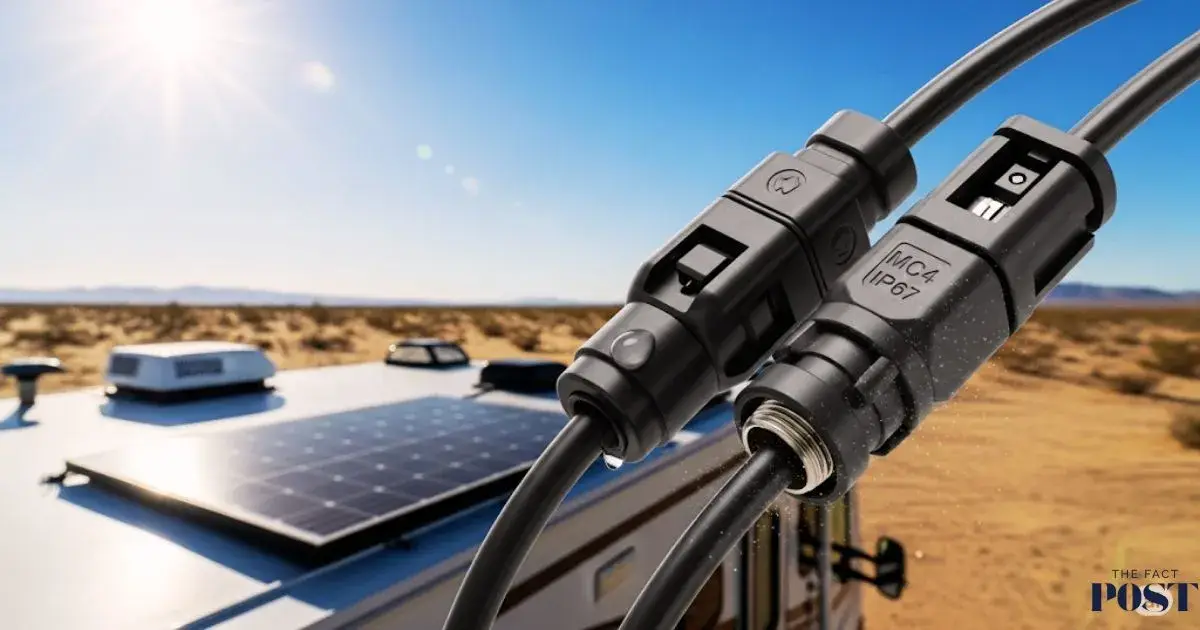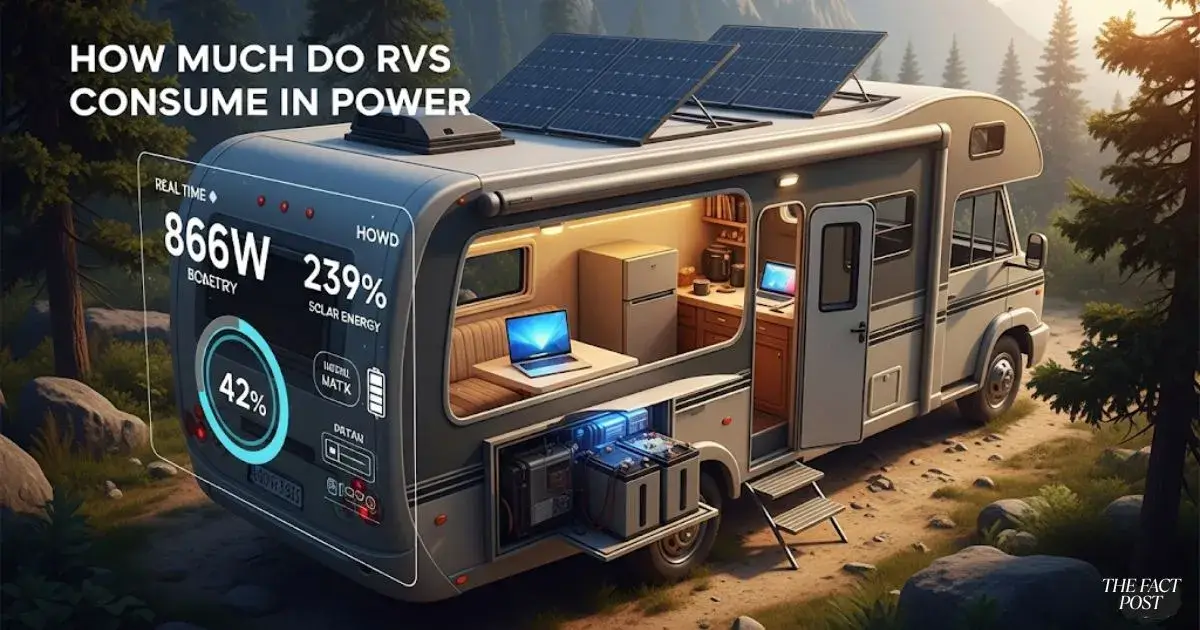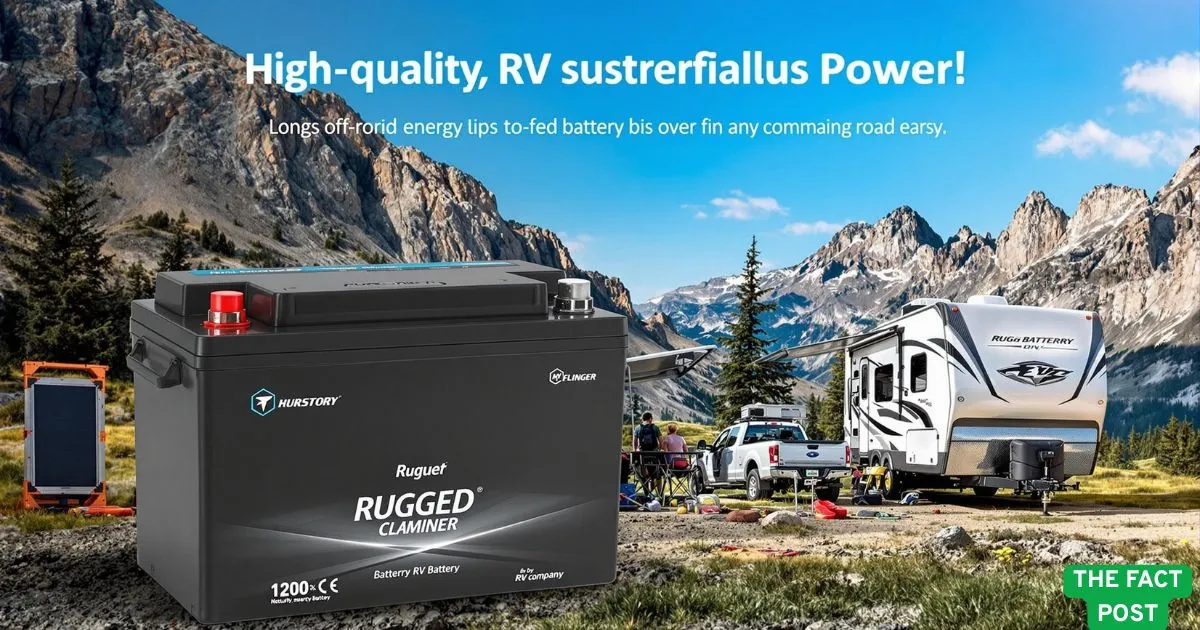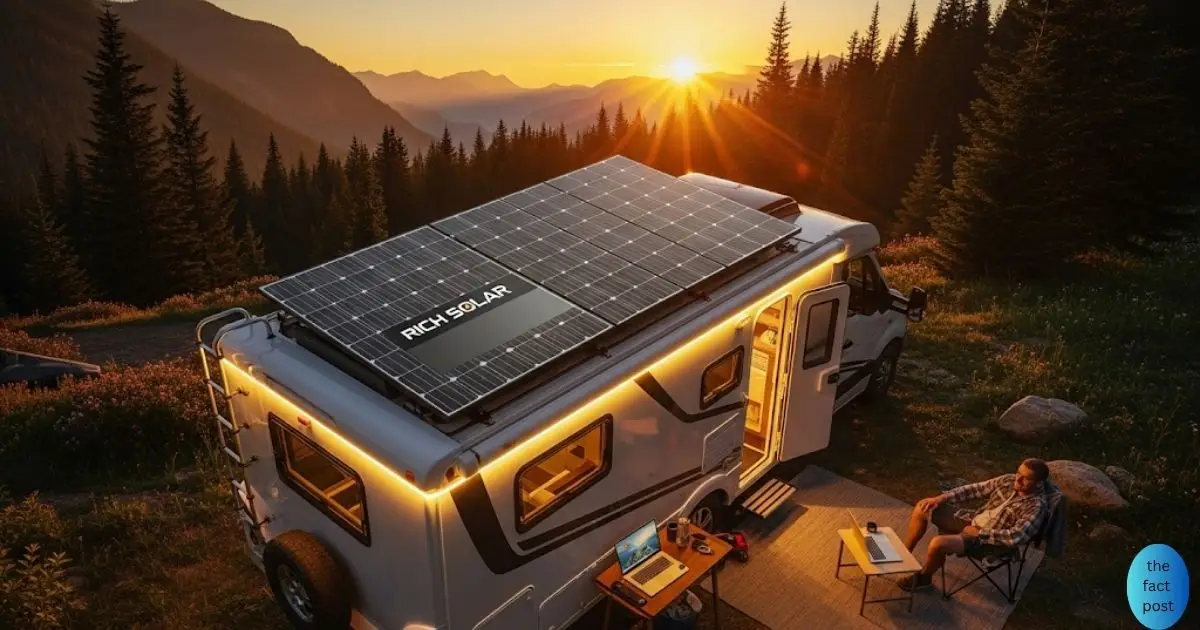MC4 Connector Durability for RV Solar Setups: What Every RVer Needs to Know (2025 Guide)
TOC:
Table of Contents
Buckle up, RVers! If you’re powering your adventures with solar, MC4 connector durability for RV setups is a game-changer you need to understand. These rugged connectors link your solar panels to your RV’s power system, braving rain, dust, and scorching sun. But how do they hold up on bumpy backroads or in coastal humidity? As a seasoned RV solar enthusiast, I’ve seen MC4s shine—and fail—under real-world conditions. In this 2025 guide, I’ll share practical tips, user stories, and expert insights to ensure your MC4 connectors stay reliable, keeping your off-grid dreams powered up wherever the road takes you.
Why MC4 Connectors Matter for RV Solar
MC4 connectors are the industry standard for photovoltaic (PV) systems, and for good reason. They’re designed to handle the high currents and voltages of solar panels while shrugging off the elements. In an RV, where your setup faces dust, rain, UV rays, and constant vibration, MC4 connector durability for RV is non-negotiable. A single faulty connection can drop your system’s efficiency or, worse, cause a fire hazard. Let’s dive into what makes these connectors tick and how they hold up in real-world RV camping.
What Are MC4 Connectors, Anyway?
MC4 stands for “Multi-Contact, 4mm,” referring to the 4mm diameter of the contact pin. Developed by Stäubli (formerly Multi-Contact), these single-contact connectors are the go-to for linking solar panels in series or parallel. Each panel typically comes with a male and female MC4 connector, snapping together with a satisfying click. Their design screams reliability: a positive locking mechanism, UV-resistant plastic, and a weatherproof seal. But how do they fare when your RV is parked in a monsoon or baking in Death Valley?
Key Features of MC4 Connectors
- IP67 Rating: Dustproof and waterproof up to 1 meter for 30 minutes.
- UV Resistance: Built to withstand years of sunlight without cracking.
- Locking Mechanism: Requires a special tool to disconnect, preventing accidental unplugs.
- High Current Handling: Rated for 20–30 amps and up to 1000V DC, perfect for most RV setups.
- Temperature Range: Operates from -40°C to 85°C, handling extreme climates.
How Durable Are MC4 Connectors for RV Use?
The short answer? MC4 connector durability for RV is impressive—if you install and maintain them properly. These connectors are built for harsh outdoor conditions, but RV life throws unique challenges their way: vibration from rough roads, frequent setup and teardown, and exposure to everything from salty coastal air to freezing mountain nights. Here’s a closer look at their durability, backed by real-world insights.
Weather Resistance: Can MC4s Handle the Elements?
MC4 connectors boast an IP67 rating, meaning they’re sealed against dust and can survive a downpour. I’ve seen them hold up flawlessly during a week-long rainstorm in Oregon, with no corrosion or power loss. Their UV-resistant polycarbonate housing also resists cracking under relentless sun—critical when your RV’s parked in Arizona for months. However, salty marine environments (like coastal RV camping) can accelerate wear on the metal contacts if not maintained.
Case Study: My friend Jake, a full-time RVer, once ignored a slightly loose MC4 connection on his rooftop panels. After a salty breeze off the Pacific coast, corrosion crept in, dropping his system’s output by 20%. A quick cleaning and re-crimp fixed it, but it was a wake-up call about regular checks.
Vibration and Movement: Surviving Rough Roads
RV travel isn’t kind to equipment. Constant vibration from gravel roads or potholes can loosen connections. MC4’s locking mechanism shines here, preventing accidental disconnections. In my own 200W rooftop setup, I’ve driven thousands of miles on backroads without a single MC4 failure. The key? Securely fastening cables to avoid strain on the connectors.
Pro Tip: Use cable ties or clips to anchor solar cables to your RV’s roof or frame. This reduces stress on MC4 connectors during travel.
Lifespan: How Long Do MC4 Connectors Last?
High-quality MC4 connectors can last 20–25 years, matching the lifespan of most solar panels. However, generics or poor installations can fail in as little as 2–3 years. A 2024 study by Solar Energy Concepts found that 90% of MC4 failures stem from improper crimping or using non-UL-rated generics. For RV use, where connectors face extra wear, I recommend inspecting them every 6 months.
User Story: Sarah, a part-time RVer, bought a budget RV solar kit with generic MC4-compatible connectors. After two seasons, she noticed flickering power output. Turns out, the cheap connectors had cracked under UV exposure. Switching to Stäubli originals solved the issue, and her system’s been rock-solid since.
Common Challenges and How to Overcome Them
Even the toughest MC4 connectors face pitfalls in RV life. Here’s how to tackle the most common issues.
Improper Crimping
A bad crimp is the number-one cause of MC4 failure. If the metal contact isn’t securely fastened to the cable, you’ll get high resistance, overheating, or intermittent power. I learned this the hard way when my first DIY setup overheated because I used a generic crimping tool.
Solution:
- Invest in a quality MC4 crimping tool (e.g., IWISS or TEMCo).
- Strip 10–12mm of insulation from 10–14 AWG solar cable.
- Crimp firmly, ensuring the metal contact grips the wire strands tightly.
- Tug-test the connection before snapping the connectors together.
Corrosion and Moisture
While MC4s are waterproof, improper sealing or damaged O-rings can let moisture sneak in. This is a big deal for coastal or humid RV camping.
Solution:
- Check O-rings for cracks before connecting.
- Use dielectric grease on metal contacts for extra corrosion protection.
- Avoid disconnecting MC4s in wet conditions to prevent water ingress.
Overheating
MC4s are rated for 20–30 amps, but exceeding this (e.g., with high-output panels) can cause overheating. In a 2024 RV solar forum thread, users reported melted connectors when pairing 400W panels with undersized cables.
Solution:
- Match connector ratings to your panel’s output (check the datasheet).
- Use 10 AWG solar cable for runs over 20 feet to minimize resistance.
- Inspect connectors for heat discoloration during routine checks.
Maintenance Tips for Long-Lasting MC4 Connectors
Keeping your MC4 connectors in top shape is easy with a little TLC. Here’s my go-to maintenance routine, honed over years of RV solar use.
- Inspect Regularly: Every 6 months, check for cracks, corrosion, or loose connections. Look for heat marks or discoloration.
- Clean Contacts: Use isopropyl alcohol and a small brush to clean dirty or corroded contacts. Avoid abrasive tools that could damage the plating.
- Secure Cables: Ensure cables are tied down to prevent strain on connectors during travel.
- Test Connections: Use a multimeter to check for voltage drops across connections. A drop over 0.1V indicates a bad crimp or corrosion.
- Replace Damaged Connectors: If a connector shows signs of wear (cracks, loose fit), replace it immediately with a UL-rated MC4.
Alternatives to MC4 Connectors for RV Solar
While MC4s dominate, other connectors might suit specific RV setups. Here’s a quick comparison.
- Anderson Powerpole Connectors: Popular for high-current, modular RV setups. They’re genderless and handle up to 180 amps but lack MC4’s weatherproofing. Great for battery banks but less ideal for panel connections.
- TS4 Connectors: These integrate with panels for module-level monitoring but are pricier and less common in RV kits.
- SMK Connectors: Compact and budget-friendly but less durable than MC4s for long-term outdoor use.
For most RVers, MC4s strike the best balance of durability, compatibility, and cost. Stick with them unless your setup demands otherwise.
Fact-Checked MC4 Connector Specs (2025)
To keep things accurate, here are the latest MC4 specs based on Stäubli’s 2025 datasheets and industry standards:
- Current Rating: 20–30A (up to 45A for some models).
- Voltage Rating: 600–1000V DC (1500V for utility-scale models).
- Temperature Range: -40°C to 85°C.
- IP Rating: IP67 (dustproof, waterproof up to 1m for 30 minutes).
- Lifespan: 20–25 years with proper installation and maintenance.
- Cable Compatibility: 2.5–6mm² (14–10 AWG).
- Certifications: UL, TÜV, NEC-compliant.
How Many MC4 Connectors Do You Need for Your RV Solar Setup?
A common question I get is, “How many MC4s do I need?” It depends on your panel configuration. Each panel typically comes with one male and one female MC4 connector. For a basic setup:
- Single Panel: No extra connectors needed (panel connects directly to charge controller).
- Series Connection: One additional pair per panel after the first (e.g., 2 panels = 1 extra pair).
- Parallel Connection: One branch connector pair per panel after the first (e.g., 3 panels = 2 branch pairs).
Example: My 400W setup uses two 200W panels in parallel, requiring one pair of MC4 branch connectors plus the panels’ built-in connectors.
FAQs About MC4 Connector Durability for RV
What is the lifespan of an MC4 connector?
High-quality MC4 connectors last 20–25 years, matching most solar panels. Generic or poorly installed connectors may fail in 2–3 years. Regular maintenance extends lifespan.
Are MC4 connectors reliable?
Yes, MC4s are highly reliable when properly installed. Their locking mechanism and IP67 rating ensure secure, weatherproof connections. Most failures stem from user error, like bad crimps.
Are MC4 connectors weatherproof?
MC4s have an IP67 rating, making them dustproof and waterproof up to 1 meter for 30 minutes. They’re ideal for RV camping in rain or dust but require maintenance in corrosive environments.
How many amps can an MC4 connector handle?
Standard MC4s handle 20–30 amps, with some models up to 45 amps. Always match the connector’s rating to your panel’s output to avoid overheating.
What is the power rating of an MC4 connector?
MC4s are rated for 600–1000V DC and 20–30A, translating to 12,000–30,000 watts in typical RV setups. Check your system’s specs to stay within limits.
How many MC4 connectors do I need per panel?
Each panel comes with one male and one female MC4. For series connections, add one pair per extra panel. For parallel, add one branch connector pair per extra panel.
Summary: Keep Your MC4 Connectors Rock-Solid
MC4 connector durability for RV setups is top-notch when you treat them right. Their IP67 rating, UV resistance, and locking mechanism make them perfect for the rugged demands of RV life. But durability isn’t a given—proper crimping, regular maintenance, and quality components are non-negotiable. Whether you’re boondocking in the desert or weathering a coastal storm, these tips will keep your solar system humming.
Call to Action: Ready to power up your RV solar game? Double-check your MC4 connections today, invest in a quality crimping tool, and share your own MC4 tips in the comments below. Let’s keep the solar vibes strong in 2025!





2 comments